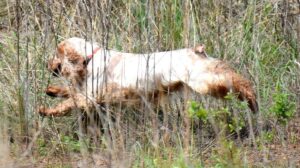
Snapshots for Understanding English Cocker Spaniels
Discover the essence of English Cocker Spaniels – from balanced structure to merry disposition. Explore breed basics now!

Home » Dog Breeds » English Cocker Spaniel Dog Breed
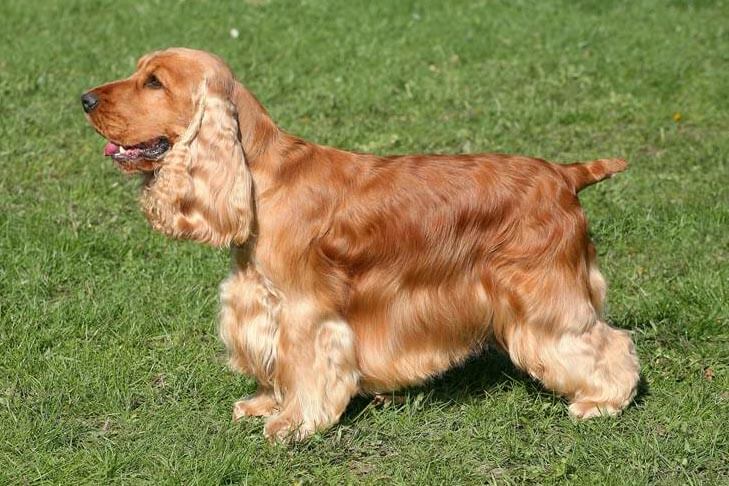
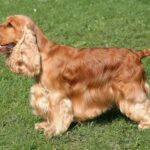
The English Cocker Spaniel, distinguished by its beautiful silky coat and cheerful personality, is one of the most beloved breeds worldwide. Originally bred for hunting game birds, this breed has captured the hearts of hunters and homeowners alike with its affectionate nature and lively spirit.
Sporting
15 – 17 inches
26 – 34 pounds
12 – 14 years
| Country of Origin | England |
|---|---|
| Bred For | Flushing & Retrieving Birds, Companionship |
| Known For | Intelligence, Trainability, Affection, Willingness |
| Popularity | Moderate |
| Temperament | Smart, Happy, Gentle |
| Activities | Hunting, Running, Therapy Dog, Dog Sports, Conformation Shows |
The English Cocker Spaniel’s history is rooted in the British Isles, where it was primarily developed as a hunting companion specifically utilized to flush and retrieve birds from dense underbrush. Its keen sense of smell, agility, and enthusiastic work ethic made the breed a favorite among hunters, especially those in search of woodcock, a bird from which the breed gets its name.
Historically, spaniels in England were categorized based on their size and the job they performed, rather than as a distinct breed. It wasn’t until the late 19th century that the various spaniels were differentiated into specific breeds. The distinction between the English Cocker Spaniel and its close relative, the English Springer Spaniel, became more pronounced during this period. The primary distinction was based on size, with the smaller spaniels used for hunting woodcock named the “Cocker.”
In 1892, the Cocker Spaniel was officially recognized as a breed distinct from other spaniels breeds by The Royal Kennel Club in the UK. The breed’s popularity grew steadily in the early 20th century, both in the UK and abroad. Its charm, intelligence, and versatility made it not just a preferred hunting companion but also a beloved companion.
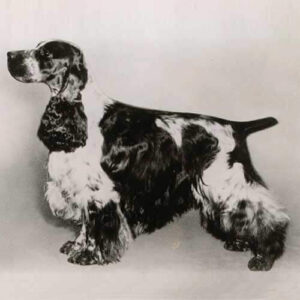
The breed’s introduction to the United States led to further development, and slight differences in appearance and temperament started to become apparent. American and English variants eventually emerged, and the American Kennel Club (AKC) recognized the English Cocker Spaniel as a separate breed in 1946.
Over the years, the English Cocker has seen success not only in the field but also in the show ring. The breed’s pleasing aesthetics, combined with its cheerful demeanor, has earned it numerous accolades at Conformation dog shows.
While hunting remains in the breed’s DNA, today’s English Cocker Spaniel is more commonly found as a companion animal, adored for its affectionate nature, intelligence, and playful spirit. The breed’s rich history and enduring qualities ensure its continued popularity among dog enthusiasts worldwide.
Adult male English Cocker Spaniels typically stand at a height of about 16 to 17 inches at the withers, while mature females generally measure slightly less, standing at around 15 to 16 inches.
The weight for males usually ranges from 28 to 34 pounds, with females typically weighing between 26 and 32 pounds.
The English Cocker Spaniel is a breed of balance and symmetry. It presents neither a heavy nor a fragile silhouette, but rather a medium-sized body that’s built for endurance and agility. The length of the body is approximately equal to the height, giving it a short-coupled appearance when viewed from the side. The substance of the breed, which refers to its overall solidity and musculature, is significant without being bulky. Its body is compact with a firm backbone, embodying both strength and elegance.
Texture: The English Cocker Spaniel boasts a silky, medium-length coat that lays flat against the body. Its texture is straight and free from curls, though a slight wave is permissible. The coat is dense enough to protect against brambles without being too coarse. Feathering can be found on the chest, belly, legs, and ears, giving the English Cocker its distinctive and unexaggerated appearance.
| Standard Color | |
|---|---|
| Black | ee |
| Black & White | ee |
| Blue Roan | ee |
| Blue Roan & Tan | ee |
| Liver Roan & Tan | ee |
| Liver Roan | ee |
| Orange & White | ee |
| Red | ee |
| Black & Tan | ee |
| Black White & Tan | ee |
| Liver | ee |
| Liver & Tan | ee |
| Liver & White | ee |
| Liver White & Tan | ee |
| Red Roan | ee |
| Golden | ee |
| Lemon Roan | ee |
| Sable | ee |
| Sable & Tan | ee |
| Sable & White | ee |
A Note About Color: Solid-colored dogs may be black, liver, or shades of red; a little white on the throat is acceptable, but white feet are not. Tan markings on a solid-colored dog should be clearly defined and of a rich shade.
| Standard Marking | |
|---|---|
| Ticked | ee |
| White Markings | ee |
| Tan Markings | ee |
Set slightly below the line of the back, the tail acts as a perfect counterbalance to the head, ensuring that the breed’s overall appearance remains harmonious and well-proportioned. When the dog is at rest, the tail is typically held level or slightly downwards. However, when in motion or when particularly excited, the English Cocker’s tail will often wag enthusiastically, showcasing the breed’s merry disposition.
Traditionally, many English Cocker Spaniels have had their tails docked, especially those intended for fieldwork, to prevent injury in thick brush and when out hunting. The practice of tail docking, however, has become somewhat controversial, and in some countries it has been banned or restricted. Today, whether an English Cocker sports a docked or an undocked tail largely depends on its geographical location, its intended use, and local regulations.
If docked, the tail is usually modified to a length that ensures a balanced appearance, allowing the dog to maintain its characteristic happy wag. Undocked tails are medium in length, tapering slightly, and are covered in a silky coat with some feathering that’s consistent with the breed’s general coat characteristics.
The decision to bring an English Cocker Spaniel into the home is rewarding on many fronts. With the breed’s joyful demeanor, affectionate nature, and stunning appearance, it’s no wonder this breed has been one of the most beloved around the world for more than a century. However, as with any dog, potential owners must understand the breed’s unique characteristics and needs to ensure a harmonious relationship.
English Cocker Spaniels, by and large, are a healthy and robust breed. Their breeding history, rooted in active fieldwork, has endowed them with a strong constitution. However, like all breeds of dog, they can be predisposed to certain health conditions.
Lifespan: The average lifespan of an English Cocker Spaniel ranges between 12 and 14 years. Proper nutrition, regular exercise, and routine veterinary care can significantly influence a dog’s health and longevity.
English Cocker Spaniels are generally healthy, but like all breeds and mixed breeds, they can be susceptible to specific health problems. Awareness and early detection can make a crucial difference in ensuring a long, healthy life for any dog. Some common concerns known to affect English Cockers include:
It’s essential for owners to establish a routine of regular veterinary check-ups. These visits can often detect health issues before they become severe, ensuring a longer, healthier life for the dog.
The vivacious and endearing personality of an English Cocker Spaniel makes it a widely cherished companion. For those new to the world of dogs, the English Cocker is an excellent choice. The breed’s amiable nature, combined with its eagerness to please, renders these dogs a straightforward choice which novice dog owners can handle. That said, proper training and early socialization remain vital for promoting harmony in the home.
These dogs are inherently sensitive, forming deep bonds with their human family members which can sometimes border on being clingy. Their delicate nature means they thrive best with positive reinforcement and a nurturing environment, whereas harsh training methods can be counterproductive. It’s also noteworthy that while English Cockers are adaptable, they have a preference for company. Extended periods of solitude can be challenging for them, and in some cases, may lead to separation anxiety.
When it comes to other dogs, English Cocker Spaniels generally showcase a sociable side. They tend to mingle well with other dogs, especially when they’ve been exposed through early socialization experiences. This amicability extends to their relationship with children. The English Cocker’s affectionate and gentle demeanor makes the breed an ideal fit for many families, but as always, interactions between dogs and young kids should always be supervised.
Moreover, while these dogs might exhibit an initial reservation, they aren’t typically aggressive or overly wary of strangers. With the right social exposure, they can transition from being reserved to being genuinely welcoming, although their loyalty and special affection will always be reserved primarily for their family members.
The English Cocker Spaniel, with its boundless energy and agile nature, requires a balanced diet that can support its active lifestyle. While feeding requirements can differ based on age, weight, activity level, and individual health, there are some general guidelines that potential and current owners should consider.
For English Cocker Spaniel puppies, their growing bodies demand a nutrient-rich diet tailored for puppies. Puppies have specific needs for protein, fat, and essential nutrients to support their growth and development. Typically, an English Cocker Spaniel puppy should be fed smaller meals more frequently, around three to four times daily. This helps to ensure steady growth and prevents overeating.
When the English Cocker Spaniel transitions into adulthood, its dietary needs change. Adult English Cocker Spaniels generally require food that’s rich in high-quality protein, to support muscle health, combined with appropriate fat levels for sustaining energy. Most adult English Cockers do well with two meals a day. The exact amount of food can vary, but on average, a healthy adult might require between 1.5 to 2.5 cups of quality dog food daily, split across two meals. However, always refer to the feeding guidelines on your chosen dog food brand and consult with a veterinarian to determine the exact quantity.
Considering their hearty appetites, it’s essential to monitor the weight of an English Cocker Spaniel regularly. Overfeeding or providing these dogs with calorie-dense treats frequently can lead to obesity, which in turn can cause a host of health issues. Providing them with a balanced diet, coupled with regular exercise, will help to ensure that an English Cocker remains at a healthy weight and in good overall health.
Lastly, clean, fresh, water should always be available for an English Cocker Spaniel, ensuring it stays hydrated, especially during warmer months or after active play sessions. Regular check-ins with a veterinarian regarding dietary needs and adjustments, especially as the dog ages or experiences health changes, will ensure the dog receives optimal nutrition throughout its life.
Training an English Cocker Spaniel is an experience filled with rewards and challenges. These dogs are known for their intelligence and eagerness to please, which can make them relatively responsive to training sessions. However, their sensitivity and spirited nature require a gentle and consistent approach.
English Cocker Spaniels typically respond best to positive reinforcement techniques. Given their sensitive disposition, harsh methods or punitive measures can be detrimental to their confidence and trust. Instead, using treats, praise, and play as rewards can yield impressive results in shaping their behavior and teaching new commands.
One thing that potential owners should be aware of is the English Cocker Spaniel’s occasional stubborn streak. While the breed is generally keen to learn, there might be moments when an individual dog can seem a bit independent-minded. Persistence, patience, and consistency are the keys to overcoming these occasional hiccups in training.
Barking can be a trait expressed by the English Cocker Spaniel. While the breed isn’t incessantly noisy by nature, these dogs will alert their owners to newcomers or unusual occurrences. Training them to understand commands like “quiet” or “enough” from a young age can help to manage their vocalizations.
In terms of intelligence, English Cocker Spaniels are quite bright. They pick up on new commands and tricks relatively quickly, making them delightful obedience competitors and happy participants in many dog sports.
However, the English Cocker’s intelligence can sometimes translate to craftiness. Owners should be prepared for the occasional mischievous behavior, especially if the dog is left to its own devices for extended periods.
Wanderlust potential is moderate in English Cocker Spaniels. While they love exploring and might be tempted by exciting scents or sights, a well-trained English Cocker Spaniel will usually return quickly when called. However, secure fencing and leashed walks are advisable until reliable recall is established.
Lastly, when considering predation, the breed’s hunting background means it can have a natural prey drive. Training can mitigate this to an extent, but owners should always be cautious when introducing smaller pets or when the dog is around wildlife.
The English Cocker Spaniel’s zest for life is evident in its energetic demeanor and enthusiasm for play. When considering this breed, understanding its exercise needs is vital to ensuring a healthy, happy, and well-behaved dog.
| Energy Level | High |
|---|---|
| Exercise Requirements | 45-90 Minutes/Day, Daily Walks, Regular Exercise, Playing with Another Dog, Mental Stimulation |
English Cocker Spaniels are high-energy dogs. Born from a lineage of working dogs primarily used for hunting, they have an innate drive to be active and on the move. This energy level means that they require regular exercise to maintain their physical and mental health.
The intensity of the breed’s exercise needs can be described as moderate to high. A simple walk around the neighborhood might not be sufficient for many English Cocker Spaniels. They thrive on varied activities such as fetch, agility training, and even off-leash runs in safe and enclosed areas. It’s essential to mix and match activities to keep these dogs engaged and prevent them from becoming bored.
In terms of playfulness, the English Cocker Spaniel is a breed that loves to engage in play. Whether it’s a game of tug-of-war, chasing a ball, or simply frolicking with other dogs, this breed revels in playful activities. This inherent playfulness can be harnessed during training sessions as well, making the process enjoyable and effective.
However, despite the English Cocker’s active nature, it’s crucial to ensure they aren’t overexerted, especially during their puppy years or in extreme weather conditions. Always monitor the dog’s energy levels and watch for signs of fatigue or overheating.
Incorporating regular exercise into the daily routine of an English Cocker Spaniel is not just about physical health. Adequate exercise also plays a significant role in preventing behavioral issues. A tired English Cocker Spaniel is usually a content and well-behaved one. Without sufficient outlets for their energy, the dog can become restless, leading to unwanted behaviors such as excessive barking, digging, or even destructive tendencies.
The flowing, silky coat of the English Cocker Spaniel is one of its distinguishing features, but it also requires regular attention to keep it in top condition. Understanding the grooming needs of this breed is essential to ensure not only a beautiful appearance but also overall health and well-being.
| Coat Type | Silky, Flat, Wavy, Medium Length |
|---|---|
| Grooming Requirements | Daily Combing, Weekly Brushing, Occasional Bathing, Routine Ear Cleaning, Periodic Nail Trimming, Regular Tooth Brushing |
The coat of the is of medium length, with feathering on the ears, chest, belly, and legs. This beautiful coat, while luxurious to the touch, can become tangled or matted if not regularly groomed. Brushing the English Cocker at least two or three times a week with a pin brush or slicker brush will help to remove loose hairs, prevent matting, and distribute natural skin oils, giving the coat a healthy sheen.
Shedding is moderate in English Cocker Spaniels. Regular brushing can help to manage and reduce the amount of hair left around the house. However, owners should expect some hair on the furniture, on clothing, and on the floor.
Beyond brushing, the English Cocker Spaniel may need occasional trims, especially around the ears, feet, and tail, to maintain a neat appearance. Many owners opt for professional grooming every few months to keep the coat looking its best, especially if they’re showing the dog.
Regular ear cleaning is of paramount importance for English Cocker Spaniels. Their long, floppy ears can restrict airflow, making them more susceptible to ear infections. Checking and cleaning the ears weekly with a vet-recommended solution can help to prevent infections.
Other routine grooming practices include trimming the nails monthly or as needed, and brushing their teeth regularly to prevent dental issues. Introducing grooming routines early in a puppy’s life will ensure it becomes accustomed to the process, making it easier and more enjoyable for both the dog and the groomer.
Living with an English Cocker Spaniel is a delightful experience, filled with moments of joy, playfulness, and affection. However, to ensure a harmonious relationship and a happy home environment, it’s essential to understand and cater to the breed’s specific needs and characteristics.
For those residing in apartments, the English Cocker Spaniel can adapt well to small-scale living. While these dogs are energetic and require regular exercise, their moderate size and adaptable nature mean they can comfortably live in smaller spaces, provided they get their daily dose of activity. However, it’s essential to have a routine in place for regular walks and play sessions to keep them stimulated and content.
Climate can influence the well-being of the English Cocker Spaniel. While they are versatile and can adapt to various weather conditions, some precautions should be taken. In cold weather, their dense coat offers some protection against the chill, but in extremely low temperatures, they might benefit from wearing a doggy sweater or coat during outdoor excursions. On the flip side, during hot weather, it’s crucial to ensure they have plenty of water and shade. Avoid walking them during the hottest parts of the day to prevent overheating.
The English Cocker Spaniel, with its affable nature, typically bonds closely with its family. They are often described as “people-oriented” and can become distressed if left alone for extended periods. If you have a lifestyle that requires you to be away from home often, consider strategies to alleviate potential separation anxiety. This can include maintaining a consistent routine, providing toys for mental stimulation, or even considering a companion pet.
The sight of an English Cocker Spaniel puppy, with its expressive eyes and joyful demeanor, is enough to melt any heart. These bundles of energy, curiosity, and affection bring unparalleled joy to a household. However, raising a puppy comes with its own set of challenges and responsibilities. Being well-informed about their specific needs during this crucial phase can set the foundation for a well-adjusted, healthy adult dog.
From the moment an English Cocker Spaniel puppy arrives in a home, the well-being and development of the little one become a priority. The pup’s first few months are a time of growth, both physically and mentally.
Diet plays a pivotal role during this stage. It is important to ensure puppies are fed a high-quality puppy food that caters to their specific nutritional requirements. Proper nutrition supports growth and development, ensuring a puppy will grow into a healthy adult.
Socialization is another crucial aspect of raising an English Cocker Spaniel puppy. Introducing puppies to various sights, sounds, people, and other animals in controlled settings is crucial. Positive experiences during their formative weeks can significantly influence their temperament and behavior as adults. Puppy training classes can be beneficial, not just for basic obedience training but also for socialization.
Consistent training from a young age is vital. English Cocker Spaniels are intelligent and eager to please, making them relatively easy to train. However, consistency is key. Establishing boundaries and using positive reinforcement techniques can yield the best results.
Regular veterinary check-ups are essential during their puppy stage. These visits not only ensure they’re growing well but also provide opportunities for vaccinations and advice on preventative care.
Play is integral to a puppy’s life. Puppies need to have access to safe toys that cater to their teething needs and stimulate their minds. Remember, though, while play is encouraged, they also require plenty of rest for their growing bodies.
Lastly, while it might be tempting to carry and pamper these adorable puppies constantly, it’s crucial to give them some independence. This fosters confidence and prevents over-reliance on their human companions.
English Cocker Spaniels, with their lively nature, intelligence, and athleticism, thrive when they’re engaged in activities and dog sports. Participation not only provides physical exercise but also offers mental stimulation and strengthens the bond between the dog and its person. Given the breed’s versatile skill set and eagerness to please, English Cockers excel in a variety of activities and competitions.
Engaging an English Cocker Spaniel in activities and dog sports ensures that it is leading a fun and fulfilling life. Not only do these events keep the dog physically active and mentally stimulated, they also offer opportunities for socialization and create cherished memories for both the dog and its partner.
The English Cocker Spaniel is recognized by the world’s leading registries and kennel organizations, which categorize the breed into a specific Group based on its unique characteristics. This breed is recognized worldwide under the following Group designations:
| Organization | Group Designation |
|---|---|
| AKC (American Kennel Club) | Sporting |
| UKC (United Kennel Club) | Gun Dog |
| CKC (Canadian Kennel Club) | Sporting Dogs |
| ANKC (Australian National Kennel Council) | Gundogs |
| RKC (The Royal Kennel Club) | Gundog |
| FCI (Fédération Cynologique Internationale) | Group 8 – Retrievers – Flushing Dogs – Water Dogs ; Section 2 – Flushing Dogs |
The ideal English Cocker Spaniel is described by a Breed Standard that is approved by each of the world’s leading registries and kennel organizations. The Breed Standards for this breed may be found in the following links:
| Organization | Breed Standard |
|---|---|
| American Kennel Club | AKC English Cocker Spaniel Breed Standard |
| United Kennel Club | UKC English Cocker Spaniel Breed Standard |
| Canadian Kennel Club | CKC English Cocker Spaniel Breed Standard |
| Australian National Kennel Council | ANKC English Cocker Spaniel Breed Standard |
| The Royal Kennel Club | RKC English Cocker Spaniel Breed Standard |
| Fédération Cynologique Internationale | FCI English Cocker Spaniel Breed Standard |
Breed clubs play a vital role in promoting, preserving, and enhancing the English Cocker Spaniel as a breed. These organizations offer a plethora of resources for breed enthusiasts, including educational materials, events, training seminars, and breeding guidelines. Being associated with a breed club offers an excellent opportunity for enthusiasts to connect, share experiences, and contribute to the well-being and future of the breed.
In the United States, the primary breed club is the English Cocker Spaniel Club of America (ECSCA). Founded in 1936, the ECSCA is dedicated to upholding the Breed Standard, supporting responsible breeding practices, and educating the public about the breed.
In Canada, the English Cocker Spaniel Club of Canada (ECSCC) serves as the leading organization. The ECSCC not only provides resources and support to breed enthusiasts, it also organizes events that showcase the breed’s excellence in all competitive arenas.
Whether you’re an aspiring breeder, a show enthusiast, or a loving pet owner, becoming a member of a club can offer insights, connections, and opportunities that can enrich anyone’s experience with this charming breed.
English Cocker Spaniels, known for their merry nature and friendly disposition, occasionally find themselves in need of new homes due to unforeseen circumstances. Rescue organizations dedicated to this breed work tirelessly to ensure these dogs receive the love, care, and permanent homes they deserve.
In the United States, the English Cocker Spaniel Club of America, Inc. plays a pivotal role in rescuing and rehoming English Cockers in need. The club maintains a rescue network and is a reliable source for those looking to adopt or surrender a dog.
In the United Kingdom, Cocker and English Springer Spaniel Rescue (CAESSR) rehomes dogs of both breeds. The group rehomes spaniels in need with people who are seeking to offer loving care and a forever home to a deserving dog.
In addition to breed-specific rescue groups, English Cocker Spaniels can occasionally be found in general dog rescue organizations. These broader-based groups, while catering to a variety of dogs, may sometimes rescue and rehome an English Cocker. For anyone who is keen on adopting this particular breed, it might be worthwhile to check with local shelters and regional dog rescue groups.
Yes, English Cocker Spaniels shed. However, their shedding is moderate compared to some other breeds. Regular grooming, including brushing, can help to manage and reduce the amount of hair they leave around the house.
No, English Cocker Spaniels are not considered to be hypoallergenic. To gauge their allergic response, potential owners with allergies should consider spending time around the breed before deciding to acquire one.
Adult male English Cocker Spaniels generally stand around 16 to 17 inches tall at the shoulder, while females tend to be a bit smaller, standing about 15 to 16 inches tall. In terms of weight, these dogs typically weigh between 26 and 34 pounds when fully grown.
English Cocker Spaniels are generally not aggressive; they are known for their friendly and sociable disposition. However, as with any breed, individual temperament can vary, and without proper training and socialization, any dog can develop undesirable behaviors.
Yes, English Cocker Spaniels are quite amenable to training. They are intelligent and eager to please, which often makes them relatively easy to train. Employing consistent and positive reinforcement methods will usually yield the best results.
English Cocker Spaniels can adapt to apartment living, but it’s essential to remember they are active and energetic dogs. The breed needs regular exercise to keep these dogs happy and healthy. If their physical and mental needs are met, they can live contentedly in an apartment setting.
Absolutely, English Cocker Spaniels are regarded as intelligent canines. They grasp new commands quickly and often shine in Obedience and Agility Trials, showing off their innate smarts.
English Cocker Spaniels, like many dog breeds, thrive on companionship and may not enjoy being left alone for prolonged periods. Doing so can lead to separation anxiety. Nevertheless, with proper training and by gradually increasing the time they’re left alone, English Cockers can often handle moderate durations without company. It’s always beneficial, however, to ensure they have toys and activities to keep them occupied.

Discover the essence of English Cocker Spaniels – from balanced structure to merry disposition. Explore breed basics now!
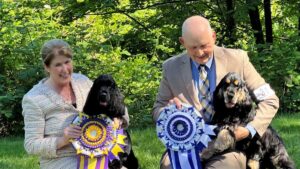
Interview with Doug and Kay Belter, breeders of Majestic English Cocker Spaniels. Read about the kennel’s beginnings, the puppies, and more.
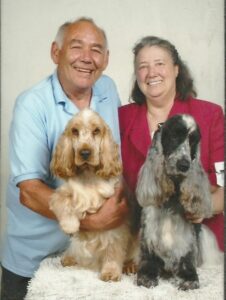
Lynda Gall: Where do I live? How many years in dogs? How many years as a breeder? Along with my husband, Bob, and our son, Robert, we live in

Interview with Bonnie Threlfall, Edgewood English Cocker Spaniels breeder, sharing her purebred dog expertise and event experiences.
The best way to ensure a long and happy relationship with a purebred dog is to purchase one from a responsible breeder. Not sure where to begin?
Contact the National Parent Club’s Breeder Referral Program, which is listed on the AKC Breeder Referral Contacts page.
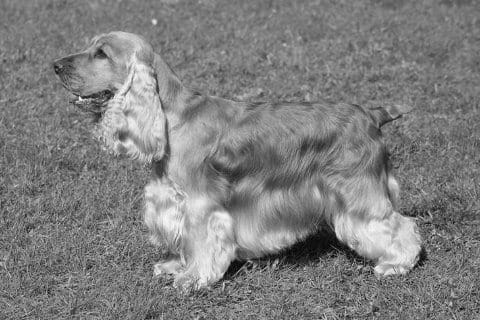

"*" indicates required fields
Showsight Magazine–the world’s most influential purebred dog publication since 1992. Each issue reaches a global audience dedicated to preserving the history and health of purpose bred dogs. Filled with award-winning editorial focused on news and insights from the dog show community, top breeders, handlers, AKC Judges, and more!